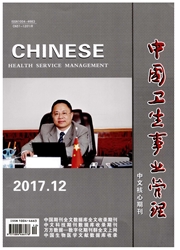

 中文摘要:
中文摘要:
目的:探究新医改前后江苏省农村患者两周就诊的影响因素及其变化。方法:根据2008年、2013年江苏省卫生服务调查农村样本点数据,采用两水平方差成分模型,分析影响患者就诊的因素并进行比较。结果:两次调查均显示患者两周就诊在家庭层面具有聚集性,2013年影响因素较2008年时减少。但老年人群、慢性病患者卫生服务利用依旧不足。结论:重视老年人群,通过开展健康教育、提高医保报销水平等促进其就医;以慢性病服务为重点开展团队卫生服务,促进患者持续、规范治疗。
 英文摘要:
英文摘要:
Objective To explore the factors to iIffluence the patients' seeking for heahhcare in two weeks in rural Jiangsu be- fore and after the new heahheare reform. Methods Data from samples of National Health Services Survey in 2008 and 2013 was ana- lyzed with a two-level random effect model. Results The data fi'om survey showed that the patients' behaviors of seeking for health- care in two weeks clustered in hierarchy of families. The influencing factors in 2013 were less than those in 2008. However,utiliza- tion of health services was still insufficient for the elderly and patients with chronic diseases. Conclusion The elderly should be paid more attention to and helped by health education and improving medical insurance reimbursement. Patients with chronic diseases can be focused on by health service teams to promote continuous and standardized treatment.
 同期刊论文项目
同期刊论文项目
 同项目期刊论文
同项目期刊论文
 期刊信息
期刊信息
